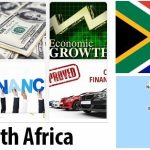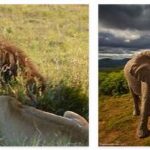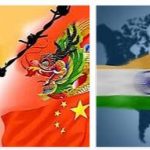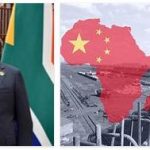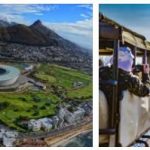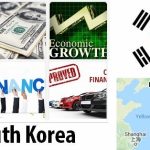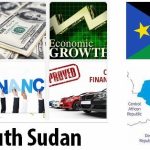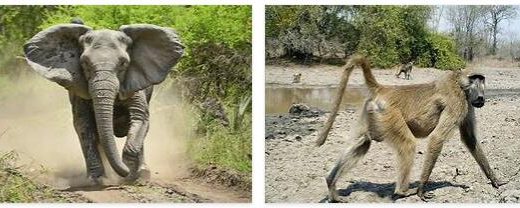South Africa Economy
Business
South Africa is the most industrialized country in Africa. The export-oriented economy focuses on manufacturing and mining. Building on numerous existing mineral resources, especially after the discovery of diamonds (from 1867) and gold (The mining of gold began near Johannesburg on the Witwatersrand in 1887), industrial development took place as early as the 1920s, which now includes almost all branches of industry. Since the abolition of apartheid and the lifting of economic sanctions in 1992/93, one of the most important tasks of economic policy has been combating high unemployment, especially among blacks (2014: 27.2%; among whites: 7.7%), and improving professional life Training, the promotion of housing construction and the expansion of water and electricity supplies. In addition, through a number of government measures, South Africa offers good conditions for increased foreign investment. The inflation rate, which averaged 13% annually from 1985-95, was reduced to below 5% by 2004, however, has remained at the same high level since then (2014: 6.1%). The South African currency, the rand, which came under severe pressure on the international financial markets in the 1990s and had to be devalued by 20%, has also recovered since then.
The regional differences are very large. Most of South Africa’s regions are dominated by agriculture. The industry is concentrated in several core areas. Mining is more diversified – depending on the location of the mineral resources – and has its focus in the provinces of Gauteng, Mpumalanga, Free State, Northern Cape, Limpopo, North-West and KwaZulu / Natal. Measured in terms of gross national income (GNI) per capita of the population of (2017) US $ 5,430, South Africa is one of the richer countries in Africa, but in addition to the regional social differences between the population groups are still very large. After the end of apartheid, the differences grew, especially within the black population. High levels of crime and conspicuous structural security measures on houses are the result of these social disparities.
Foreign trade: The international trade sanctions imposed from 1986 to 1991 hit individual branches of the economy and companies hard, but could not bring South African foreign trade to a standstill as a whole. The trade balance shows a slight import surplus (2014: import value US $ 99.9 billion, export value US $ 90.6 billion). In addition to gold, platinum, diamonds, manganese, uranium and iron ore, coal, iron and steel products as well as machines, fruit, vegetables and flowers are exported. The main trading partners are China, Germany, the USA, Great Britain and Japan.
Agriculture
In the agricultural sector (2014) around 5% of the workforce generate 2.5% of GDP. 10% of the land area is used for arable farming, another 69% is used for cattle breeding as meadows and pastures. As a result of the land ownership laws that were in force until 1991 (the black population was prohibited from acquiring land outside their homelands), there are two forms of agriculture: The relatively few modern farms of the whites and now blacks who work in a market-oriented manner and generate the majority of the agricultural value added, there is a large number of black farms on small farms, most of which only operate subsistence farming. Accordingly, the land question, i.e. H. the fair redistribution of land resources, discussed,
The sugar cane, which is important for export (South Africa is one of the world’s largest sugar cane producers), is grown in the coastal area of the province of KwaZulu / Natal, the main food is maize mainly in the “Maisdreieck” of the highlands in the provinces of North-West and Free State, wheat traditionally in the winter rain area of the Western Cape Province, recently increased in summer rain areas of the Free State Province. Apples, pears, peaches, apricots, citrus fruits, flowers and grapes (wine-growing center is Paarl; Cape wines ) come mainly from the irrigation areas of the Western Cape Province, the Lowveld Mpumalangas and from KwaZulu / Natal. Cattle breeding (sheep, goats, cattle, pigs, ostriches) is of great economic importance. The most important sheep breeds are merino and karakul sheep, with goats accounting for 60% of the angora goats, which provide mohair wool.
Forestry: Forestry has only recently developed more strongly. South Africa is poor in closed forests. The “real” forests along the coastal zone and the Great Edge step were heavily exploited or cleared in the 19th century; Most of today’s forests are afforestation, mostly with fast-growing conifers and eucalyptus. Almost 8% of the country’s area is now designated as forest, three quarters of which are privately owned. Timber accounts for around three fifths of the logging.
Fisheries: Coastal and deep-sea fisheries find favorable conditions on the west coast of South Africa thanks to the cold, nutrient-rich upwelling waters of the Benguela Current. However, due to overfishing by other countries’ fishing fleets, the importance of fishing has declined since the late 1960s.
Tourism
South Africa is one of the most popular international travel destinations, so tourism also plays an important role economically. The diverse landscapes, large wildlife sanctuaries (including the Kruger National Park), mountains, a 3,000 km long coast with beaches as well as Cape Town and the Cape Peninsula are the main attractions. Visit healthvv.com for south African destinations.
Increasing emphasis is placed on ecotourism. The foreign guests, over 10 million per year, come mainly from Africa, as well as from Europe (especially from Great Britain and Germany), North America and Asia (Japan and China). Inland tourism is also gaining in importance because not only white South Africans, but also more and more members of the new black middle class can afford vacation trips.

